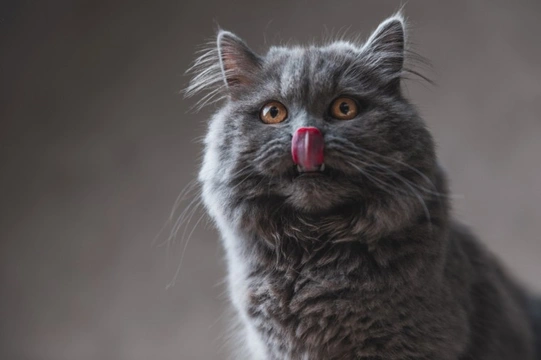
10 things you need to know about the British longhair cat before you buy one
The British longhair is a native British cat breed that is popular and in demand across the UK, although to a lesser extent to their shorthaired cousins.
These good looking, loving and luxuriously coated cats are definitely a breed to consider if you want to buy a longhaired cat and are prepared to take the proper care of those lovely coats; but you also need to find out before you go ahead and make a purchase what you’re getting in to, what type of personalities they have, and what type of care a British longhair cat needs.
Different types of owners, homes and lifestyles are a good fit for some cat breeds but not others, and this is why picking the right breed (and ruling out others that might not work out) is so important; and with this in mind, this article will tell you 10 things you need to know about the British longhair cat breed, before you go ahead and buy a kitten of the breed and bring it home. Read on to learn more.
1. The British longhair is not recognised by the GCCF
First of all, the British longhair is not formally recognised as a pedigree cat breed by he Governing Council of the Cat Fancy or GCCF, the umbrella body for cats and cat breeds in the UK. This is because despite the British longhair type having been around in some form for a relatively long time, historically, they tended to occur accidentally as part of British shorthair litters, either due to gene mutations or mating mis-matches, rather than as deliberate attempts to breed a longhaired cat.
However, the British longhair is in the early stages of achieving GCCF registration as of the time of writing (August 2019), and may quite feasibly achieve this in the near future.
2. The British longhair was developed from the British shorthair
The British shorthair cat breed is, as you might expect, a close relative of the British longhair, and has been integral in the breed’s development. As such, they share a lot of key traits in terms of looks (aside from coat length) and temperament, although the input of other breeds in the British longhair’s ancestry means that they are not simply longhaired equivalents of the same breed.
3. A variety of longhaired cat breeds were involved in the mix too
To reliably and uniformly produce cats with long coats that can be classed as a distinct breed, longhaired cat breeds were outcrossed to British shorthairs to achieve foundation breeding stock for the British longhair breed.
These include Persian cats and Turkish Van cats most commonly, although this is not exclusively the case.
4. British longhairs can be variable in appearance and traits
Because of the different types of longhaired cats that may be present in any British longhair cat’s ancestry, their ultimate appearance and core traits can vary somewhat. However, British longhairs are bred to be relatively round and stout, with fairly prominent features.
5. British longhairs need a significant amount of brushing and grooming
The British longhair cat’s coat needs a significant amount of brushing and grooming each day to keep it neat and in good condition, and to prevent knots and matting. Without daily care, the cat’s coat is apt to become tangled and uncomfortable, and increase the chances of the cat developing hairballs.
6. British longhairs have elevated risk factors for kidney problems
British longhairs with Persian ancestry may have elevated risk factors for certain kidney problems that can b found in the Persian breed, such as polycystic kidney disease. However, no cat or cat breed is problem free, and there are no guarantees of good health in any cat breed, regardless of ancestry.
7. British longhairs are moderately expensive to buy
The average asking price for TICA pedigree British longhair cats for sale in 2018 was £630 each according to Pets4Homes statistics, and for non-pedigrees, around the £405 mark. These figures are around the average across the board for recognised cat breeds, and are not notably high or low.
8. The breed has a reputation for being laid back and affectionate
The British longhair cat’s temperament is reputed to be fairly laid back, not overly prone to stress, and generally calm and affectionate. Cats of the breed will of course often be playful and tend to display some level of prey drive, but they are not amongst the most highly strung of breeds.
9. They can be prone to obesity
British longhair cats can be prone to being slightly overweight, particularly in older cats and those that are neutered. Monitoring and managing the cat’s weight and diet and encouraging them to play and stay active can help to prevent this.
10. They might be a good fit for an indoor-only home
Because British longhair cats tend to be fairly laid back and chilled out, they are a breed that is often happy being kept indoors only, or with only limited access to the outdoors.
This is best achieved by choosing a kitten that has never known any different, and may mean that they could be viable pets for people who live in flats and do not have access to a garden.



